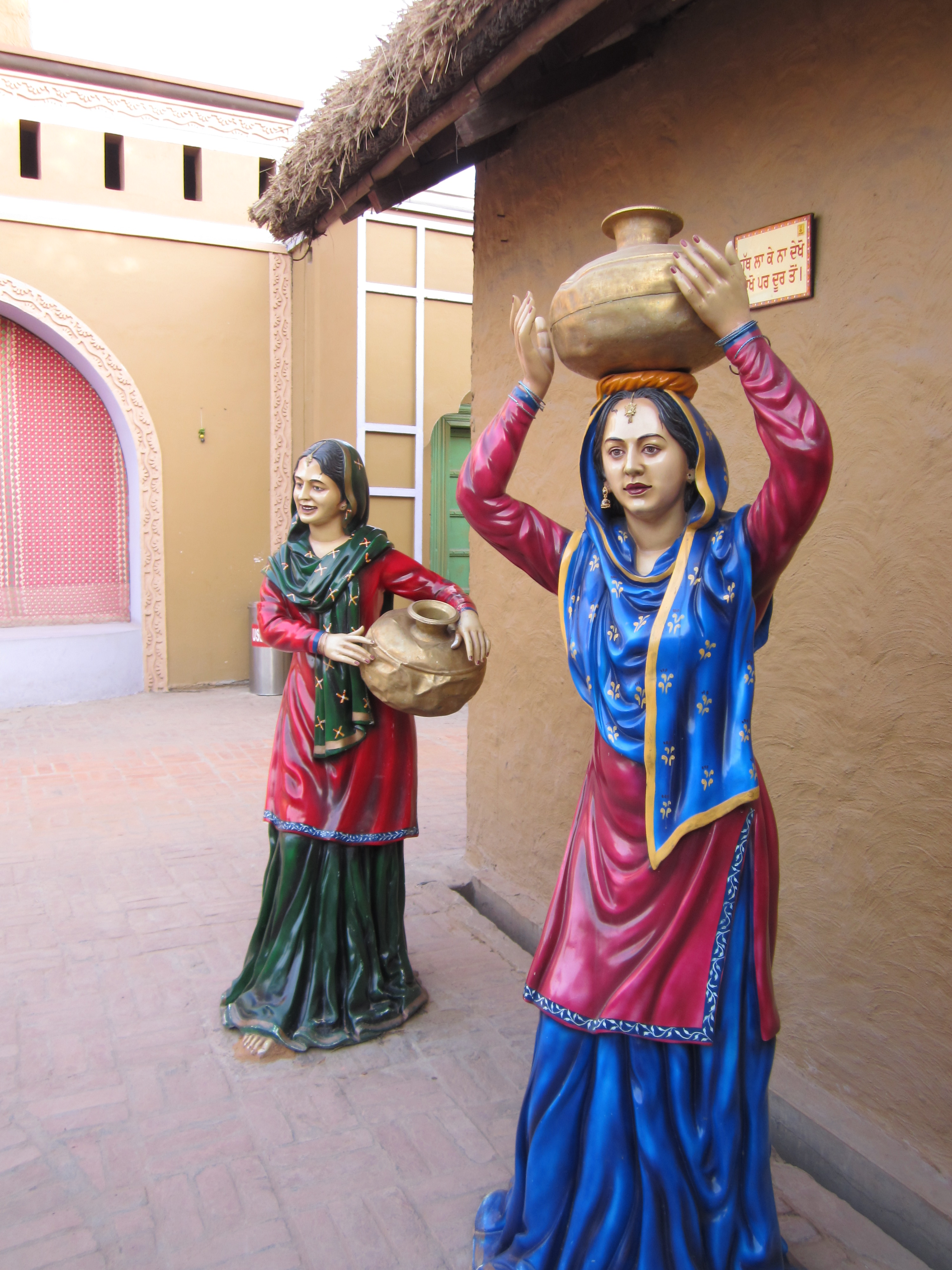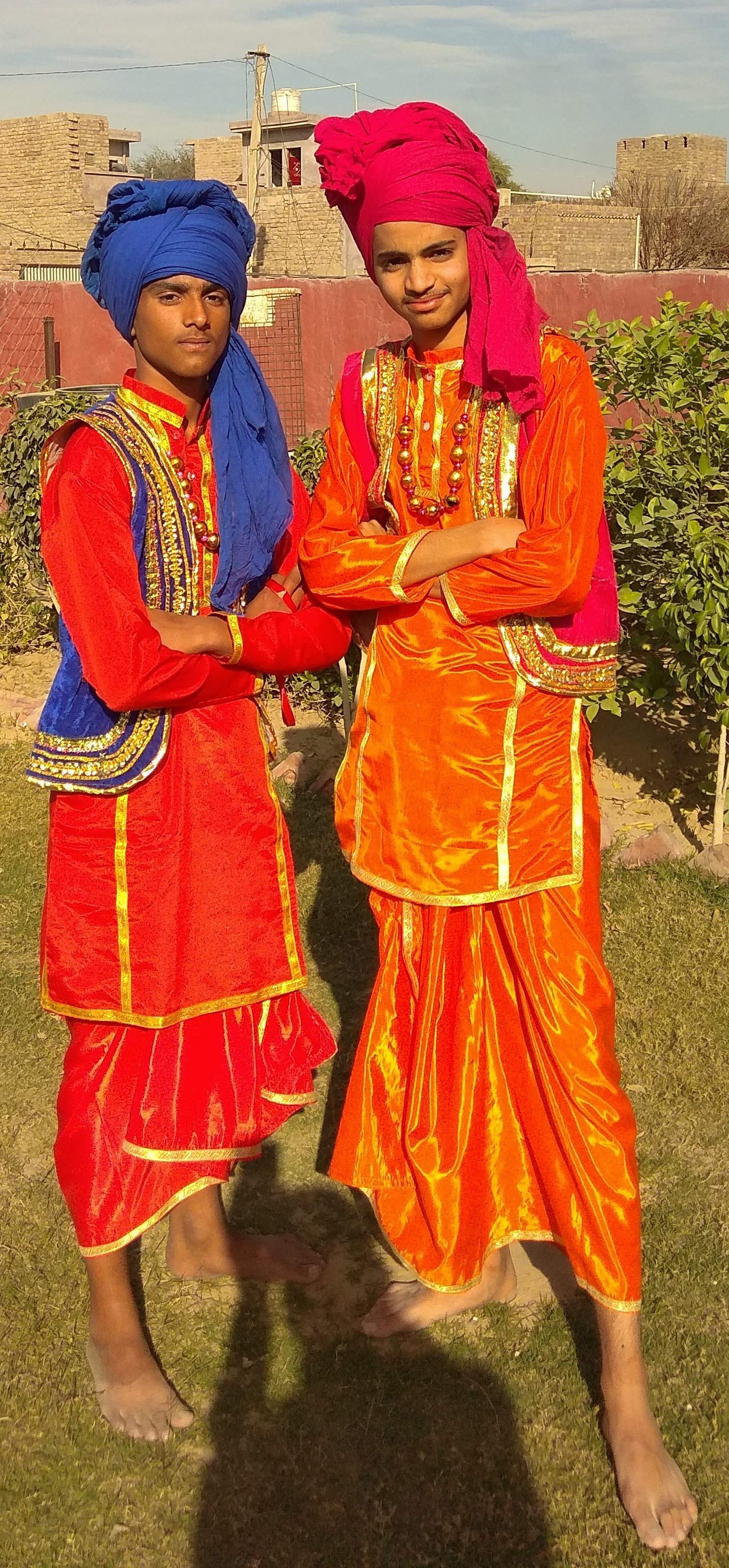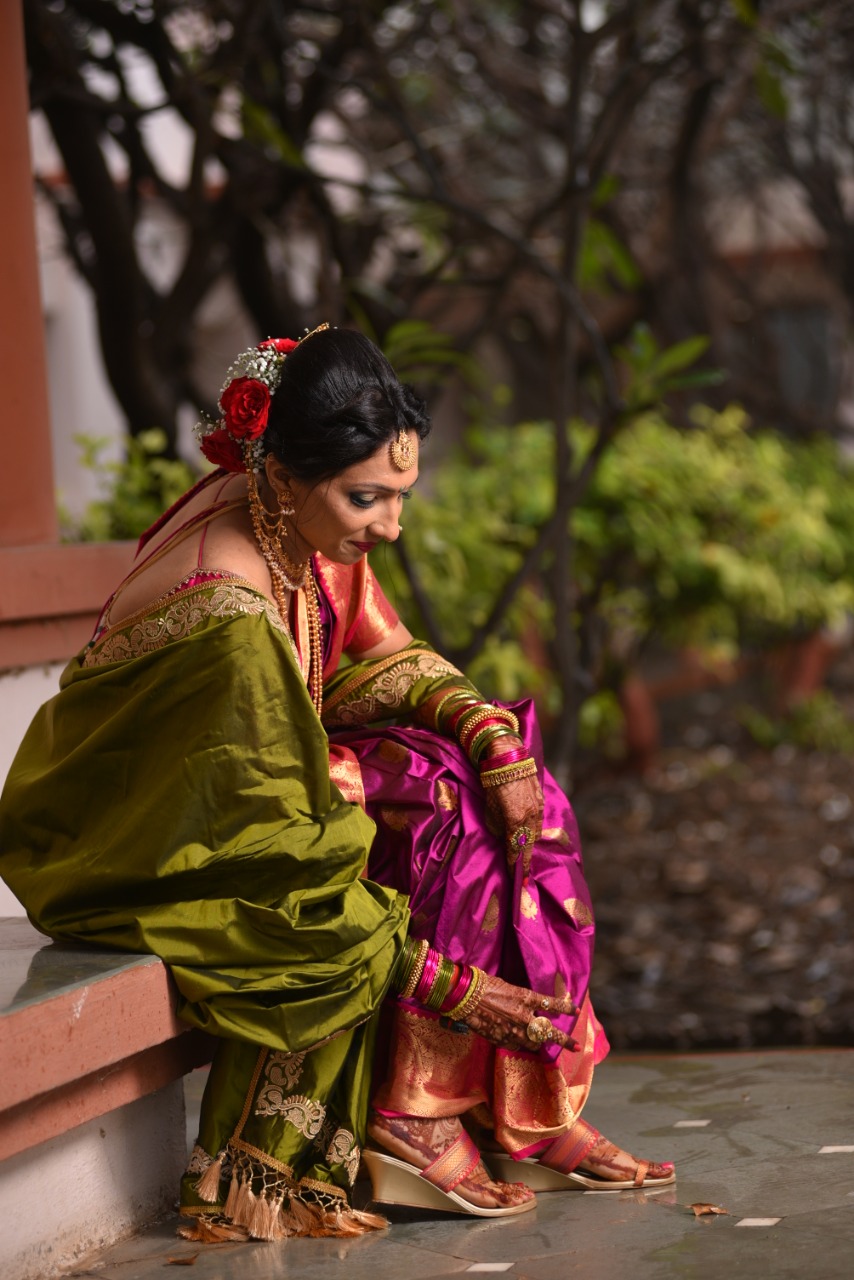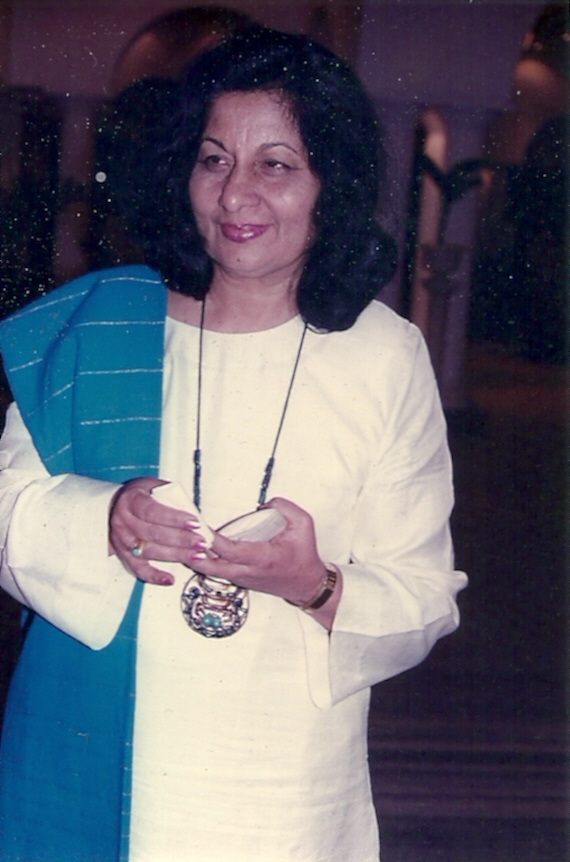 |
| Dressed for an Event HimanshiBaghel, CC BY-SA 4.0, via Wikimedia Commons |
India’s clothing culture is a living tapestry: centuries of weaving, dyeing, embroidery, and draping traditions meet rapidly changing contemporary styles. Across regions, climate, religion, trade routes, and local crafts shaped garment types that continue to evolve.
Today you’ll find age-old silhouettes worn side-by-side with ready-to-wear and fusion designs—saree gowns, crop-top lehengas, kurti dresses, jumpsuits with ikat prints, and pre-stitched sarees for convenience.
This essay explores the major dress types in eight regions of India—how they originated, the fabrics and techniques that define them, and how modern fashion has reinterpreted each form.
This is a regional map to understand Indian dresses.
1. Punjab & North India: Comfort, Color, and Embroidery

Punjabi Ghagra—Women's Dress
Malikhpur, CC BY-SA 4.0, via Wikimedia Commons
Key Dress Types
Malikhpur, CC BY-SA 4.0, via Wikimedia Commons
-
Salwar-Kameez / Patiala Salwar: A loose, pleated lower garment with a straight or flared tunic.
The Patiala salwar is instantly recognizable for its many deep pleats and comfortable volume.
-
Kurta-Pajama & Sherwani: For men, the kurta-pajama is everyday wear, while sherwanis and embellished kurtas are formal and wedding staples.
-
Phulkari: A technique of surface embroidery applied to dupattas, stoles, and tunics—bright floral motifs worked in silk thread.
Fabrics & Techniques
Light cottons, blended fabrics for daily comfort and rich silks or brocades for weddings.
 |
| Bhangra Dress shemaroo aka Sivender singh, CC BY 4.0, via Wikimedia Commons |
Phulkari embroidery, mirror and bead embellishments, and bright dye palettes anchor the region.
Modern Trends
Punjabi silhouettes have been adapted into short kurti dresses, asymmetrical kameezes, and Indo-western jumpsuits that keep embroidery but change the cut. Jacket overlays, corset-inspired blouses with lehengas, and fusion bridal wear (e.g., lehengas with off-shoulder blouses) are common.
2. Gujarat & Rajasthan: Mirror Work, Tie-Dye, and Festive Flair
Key Dress Types
-
Ghagra Choli / Chaniya Choli: Flared skirts paired with fitted blouses and dupattas; staples at festive dances and celebrations.
-
Bandhani/Tie-Dye & Patola: Distinctive tie-dye patterns and double-ikat weaving for luxurious sarees and skirts.
-
Nivi & Local Drapes: Regional draping styles, often with dramatic pallus and ornamentation.
Fabrics & Techniques
Cotton and silk used with mirror work, gota patti, heavy embroidery, and bandhani. The intense colors and reflective embellishments create lively festival aesthetics.
Modern Trends
Designers have translated mirror work and bandhani patterns into cocktail-length skirt sets, fusion lehengas with structured blouses, and cape blouses. Lightweight fabrics and simplified embroidery make these looks wearable for urban events.
3. Maharashtra: Tradition, Drapes, and Silk Identity

Maharashtrian Dress
Anuja1224, CC BY-SA 4.0,
via Wikimedia Commons
Key Dress Types

Anuja1224, CC BY-SA 4.0,
via Wikimedia Commons
-
Nauvari Saree: A nine-yard saree often draped in a dhoti style for easier movement—iconic in classical dance and folk festivals.
-
Paithani: A silk saree ornamented with peacock and floral motifs, renowned for its rich zari borders.
-
Traditional Male Attire: Dhoti, kurta, and turbans (pheta) for ceremonies.
Fabrics & Techniques
Silk weaving with gold and silver threads, handloom peacock motifs, and distinctive borders. Contrast-color pallus are a hallmark.
If any tourists need any help, here is the official website of the Government of India to guide the domestic and foreign tourists: India Tourism Development Corporation (ITDC)
Modern Trends
Pre-draped nauvari variants, saree gowns that mimic the nauvari silhouette, and Paithani-inspired skirts and jackets are part of contemporary wardrobes—marrying tradition with mobility.
4. Tamil Nadu & South India: Kanjivaram Splendor and Transitional Dresses

Dresses During Celebrations
S y a m S u b r a m a n i a n, CC BY-SA 2.0, via Wikimedia Commons
Key Dress Types

S y a m S u b r a m a n i a n, CC BY-SA 2.0, via Wikimedia Commons
-
Kanjivaram (Kanchipuram) Saree: Heavy silk with temple and floral motifs; prime bridal wear.
-
Half-Saree/Langa Voni: A transitional three-piece outfit for adolescent girls—skirt, blouse, and drape.
-
Veshti & Angavastram: Traditional male garments worn for religious occasions.
Fabrics & Techniques
Pure mulberry silk, brocade weaving, and sturdy temple borders. Rich color combinations and mythological motifs dominate.
Modern Trends
Pre-stitched sarees, saree gowns, cropped blouses, and saree-draped gowns for ease of wear. Designers incorporate southern silk borders into western gown silhouettes and jackets to create cross-genre garments.
5. Bengal & Odisha: Ikat, Baluchari, and Lightweight Everyday Drapes

Dresses During Religious Events
Goutam1962, CC BY-SA 4.0, via Wikimedia Commons
Key Dress Types

Goutam1962, CC BY-SA 4.0, via Wikimedia Commons
-
Sarees (Taant, Baluchari, Sambalpuri Ikat): Each subregion has its signature—fine cotton taant for daily wear, intricate Baluchari for storytelling borders, and Sambalpuri ikat for geometric patterns.
-
Dhoti/Kurta for Men: Still central for festivals and cultural events.
Fabrics & Techniques
Handloom cottons and silks, block printing, ikat resist-dyeing, and narrative weaving that depicts scenes and motifs on pallus and borders.
Modern Trends
Minimalist sarees for office wear, Ikat prints on dresses and jackets, and kantha embroidery used as overlays on western shirts and dresses. Lighter palettes and simplified motifs make traditional textiles everyday-friendly.
6. Uttar Pradesh & the Hindi Heartland: Brocades, Mughal Silhouettes, and Formal Wear

Banjara Lambani woman in traditional dress
Dr. Raju Kasambe, CC BY-SA 3.0,
via Wikimedia Commons
Key Dress Types

Dr. Raju Kasambe, CC BY-SA 3.0,
via Wikimedia Commons
-
Banarasi Saree: Brocade sarees woven with gold and silver threads—the quintessential wedding saree.
-
Anarkali Suits: Long, flowing frock styles inspired by Mughal court dress.
-
Kurta & Sherwani: Formal male attire, often richly embroidered.
Fabrics & Techniques
Zari brocade, fine weaves, chikan embroidery, and heavy work for ceremonial garments.
Modern Trends
Anarkali-inspired gowns, Indo-western draped skirts, lehenga-gowns, and fusion bridal trousseaus that combine brocade textures with modern cuts.
7. Assam & The Northeast: Distinct Silks and Ethnic Identity

Assam and North Indian Women Dresses
Rohan Gautam 002, CC BY-SA 4.0, via Wikimedia Commons
Key Dress Types

Rohan Gautam 002, CC BY-SA 4.0, via Wikimedia Commons
-
Mekhela Sador: A two-piece draped garment for women, with a cylindrical lower piece and an upper drape.
-
Traditional Weaves for Men: Simple shirts or jackets paired with woven shawls during festivals.
Fabrics & Techniques
Muga and eri silks, handloom motifs of natural elements, and subtle, earthy palettes. Slow weaving methods and durable yarns are typical.
Modern Trends
Assamese silks incorporated into cocktail dresses, structured jackets, and contemporary gowns—designers often use distinctive borders as statement panels on western silhouettes.
8. Central & Tribal India (Madhya Pradesh, Chhattisgarh, Jharkhand): Folk Textiles and Handcrafted Dress Forms
Key Dress Types
-
Tribal Wraps, Skirts, and Tunics: Varying by tribe; many are practical, handcrafted pieces made from cotton or handspun fibers.
-
Embroidery & Beadwork: Heavily used for ceremonial attire.
Fabrics & Techniques
Natural dyes, handspun cottons, and appliqué or beadwork that denote tribal identity and ritual function.
Modern Trends
Contemporary designers collaborate with tribal artisans to bring appliqué and tribal motifs into modern dresses, jackets, and accessories while supporting craft economies.
Cross-Regional Trends: How Traditional Dresses Are Changing Nationwide
Fusion & Hybridization
Saree gowns, lehenga-with-crop-top combos, kurti-dresses, and western jumpsuits with Indian prints show how designers fuse aesthetics. The result: more options that fit urban lifestyles while keeping cultural markers.

Bhanu Athaiya -
Indian Woman Dresses
Aniruddha Gupta, CC BY-SA 3.0,
via Wikimedia Commons
Pre-Stitched & Ready-to-Wear

Indian Woman Dresses
Aniruddha Gupta, CC BY-SA 3.0,
via Wikimedia Commons
Convenience reimagines classic drapes: pre-stitched sarees, ready-to-wear lehengas, and kurta dresses make traditional looks accessible to people who prefer quick dressing or are unfamiliar with traditional draping.
Sustainable & Handloom Revival
A growing movement prioritizes handlooms, organic fibers, and natural dyes. Consumers increasingly value provenance, artisan stories, and ecological manufacturing.
Casualization & Minimalism
Everyday versions of heavy traditional garments are lighter, less embellished, and suited to office and casual settings. Pastel palettes, muted zari, and simplified borders are common.
Gender Fluidity & New Silhouettes
Contemporary Indian fashion explores gender-neutral garments—draped capes, long kurtas as tunic dresses, and pant-like drapes that blend traditional and modern gendered clothing codes.
How to Read the Regional Dressscape (A Practical Guide)
-
Silhouette First: Identify whether a garment is draped (saree, mekhela sador), stitched (kameez, lehenga), or hybrid (saree gown).
-
Technique Second: Note the textile technique—ikat, bandhani, brocade, phulkari, or kantha—which roots the garment in a place.
-
Occasion Third: Differentiate daily versus ceremonial versions. Fabrics and ornamentation scale up for weddings.
-
Update Fourth: Look for fusion clues—modern cuts, linings, zippers, and pre-stitched convenience—which show adaptation.
Primary Keywords to Use Naturally: types of dresses in India, regional Indian dresses, traditional Indian dresses, modern Indian fashion, and fusion Indian outfits.
Conclusion
India’s dresses are both archives and living experiments: they conserve ancestral craft and evolve with social change. From the voluminous ghagras of western India to the elegant mekhela sador of the Northeast, the Kanjivaram silks of the south to the brocades of the north, each garment carries a cultural signature—and today’s designers and wearers keep those signatures alive by reinterpreting them.
Whether you’re researching for a fashion article, curating a seasonal collection, or simply exploring cultural wardrobe ideas, this regional mapping helps you understand not only what people wear, but why they wear it—and how those choices are changing.
No comments:
Post a Comment